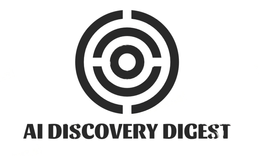Welcome to the future of diversity and inclusion training! In this rapidly evolving digital age, where AI technology is transforming various aspects of our lives, it’s no surprise that ChatGPT is making waves in promoting inclusivity and equality in the workplace. With its remarkable capabilities and potential, ChatGPT has become a powerful tool for organizations striving to create diverse and inclusive environments. So, join us as we explore how this cutting-edge technology can revolutionize diversity and inclusion training programs like never before! Get ready to dive into an exciting journey where AI meets empathy and understanding – a game-changer for fostering greater equality in our professional spaces. Let’s get started!
The Importance of Diversity and Inclusion Training in The Workplace
In today’s rapidly evolving world, diversity and inclusion training has become more crucial than ever before. It goes beyond just ticking boxes or meeting legal requirements; it fosters a culture of acceptance, respect, and understanding within the workplace.
By embracing diversity in all its forms – be it racial, ethnic, gender, age, or religious background – organizations can tap into a wealth of perspectives and ideas that drive innovation and creativity. Diversity brings fresh insights to problem-solving and decision-making processes, ultimately enhancing business performance.
Inclusive workplaces create a sense of belonging for employees from diverse backgrounds. When individuals feel valued and included for who they are rather than just what they bring to the table professionally, their motivation levels soar. This leads to higher employee engagement and retention rates.
Diversity and inclusion training plays an instrumental role in breaking down biases and stereotypes that may exist unconsciously among employees. By raising awareness about these issues through interactive sessions or workshops facilitated by experts or even AI-powered tools like ChatGPT- organizations can foster empathy amongst their workforce.
Such training equips individuals with the knowledge needed to challenge their own assumptions while promoting inclusivity in day-to-day interactions with colleagues. It helps create an environment where everyone feels safe expressing themselves authentically without fear of judgment or discrimination.

How ChatGPT Can Aid in Diversity and Inclusion Training
ChatGPT, powered by OpenAI’s advanced AI technology, has the potential to revolutionize diversity and inclusion training in the workplace. With its natural language processing capabilities and ability to engage in meaningful conversations, ChatGPT can play a vital role in educating employees about the importance of diversity, equity, and inclusion.
By simulating real-life scenarios and providing personalized feedback, ChatGPT enables individuals to develop a deeper understanding of different perspectives and challenges faced by marginalized groups. It can facilitate discussions on sensitive topics such as unconscious bias, microaggressions, and inclusive leadership. Through interactive dialogues with ChatGPT, employees can explore their own biases in a non-judgmental environment while gaining insights into how they can promote inclusivity.
ChatGPT offers scalability in diversity training programs. It can be accessed remotely at any time convenient for employees across various locations or time zones. This flexibility ensures that everyone has equal access to valuable learning resources without logistical constraints.
In addition to training sessions facilitated by human instructors or facilitators, incorporating ChatGPT into the learning process adds an element of interactivity that enhances engagement levels among participants. The conversational nature of ChatGPT fosters active participation from learners who may feel more comfortable expressing their thoughts through dialogue rather than traditional methods like presentations or written assignments.
It is important to acknowledge some potential challenges associated with using AI technology for diversity and inclusion training. One concern is ensuring that ChatGPT provides accurate information free from biased content itself. Developers need to continuously monitor its responses to avoid reinforcing discriminatory stereotypes or misinformation inadvertently.
While ethical considerations are paramount when utilizing AI technology for sensitive topics like diversity and inclusion, ChatGPT’s potential impact in promoting inclusivity cannot be overlooked.
Examples of Successful Implementation of ChatGPT in Diversity and Inclusion Training Programs
ChatGPT has proven to be a valuable tool in promoting diversity and inclusion in the workplace. Several organizations have successfully implemented ChatGPT in their training programs, leading to positive outcomes.
One example is a large tech company that used ChatGPT to enhance its diversity and inclusion training. By incorporating interactive conversations with ChatGPT, employees were able to engage in realistic scenarios and practice inclusive language and behavior. This allowed them to develop empathy towards different perspectives and understand the impact of their words and actions on others.
Another successful implementation was seen in a healthcare organization that utilized ChatGPT for bias awareness training. The AI technology provided personalized feedback on unconscious biases that individuals may not be aware of, helping them recognize areas where they could improve their inclusivity skills.
An educational institution used ChatGPT as part of its diversity education program. Students interacted with the AI-powered chatbot to learn about diverse cultures, identities, and experiences. They could ask questions without fear of judgment or embarrassment, fostering open-mindedness and understanding among students.
Potential Challenges and Concerns with Using ChatGPT for Diversity and Inclusion Training
While ChatGPT has immense potential in aiding diversity and inclusion training, there are certain challenges and concerns that need to be addressed. One of the primary concerns is the risk of bias inherent in AI systems. ChatGPT learns from vast amounts of data, including text from various sources, which may inadvertently perpetuate biased or discriminatory language.
ChatGPT lacks real-time understanding and contextual awareness. It may struggle to comprehend complex scenarios related to diversity and inclusion accurately. This limitation can lead to inadequate responses or misinterpretation of user queries.
Another challenge is maintaining privacy and security when using a language model like ChatGPT for sensitive training topics. Organizations must ensure that confidential information shared during these interactions remains protected.
An overreliance on technology like ChatGPT might diminish human connection in diversity training programs. While it can provide valuable insights, it cannot fully replace the empathy, lived experiences, and personal touch that human trainers bring to the table.
To overcome these challenges, ongoing monitoring and fine-tuning of chatbot models are essential. Regular updates based on feedback from users can help mitigate biases while improving accuracy in responding to diverse scenarios.
While ChatGPT offers exciting possibilities for enhancing diversity and inclusion training initiatives, it is crucial to address potential challenges such as bias mitigation, contextual comprehension improvement, privacy protection measures implementation,and the preservation of human connection within these programs.
Ethical Considerations When Using AI Technology for Sensitive Topics Like Diversity and Inclusion
When it comes to utilizing AI technology, particularly in the realm of sensitive topics such as diversity and inclusion, ethical considerations must be at the forefront. It is crucial to approach this with a deep understanding of potential risks and challenges.
One major concern is bias within AI algorithms. These systems learn from existing data, which means they can inadvertently perpetuate biases that already exist in society. This underscores the importance of employing diverse datasets when training AI models to ensure fair representation across different demographics.
Another consideration is privacy and consent. When using ChatGPT or any other platform for diversity and inclusion training, it’s vital to obtain informed consent from participants regarding their personal information being processed by an AI system. Transparency about data usage should also be prioritized to build trust between users and the technology.
Accountability is essential. Organizations must take responsibility for developing robust guidelines on how ChatGPT should be used in diversity and inclusion training programs. Regular audits should be conducted to identify any biases or unintended consequences that may arise during implementation.
Ongoing evaluation is critical in ensuring that these technologies are continually assessed for fairness, accuracy, and effectiveness in promoting diversity and inclusion goals. This includes monitoring feedback from users who interact with ChatGPT during training sessions.
Ethics must guide every step of integrating AI into diversity and inclusion initiatives. By addressing bias concerns head-on through inclusive dataset selection, obtaining informed consent, promoting accountability within organizations, and conducting regular evaluations – we can maximize the positive impact while minimizing potential harm.
The future of ChatGPT in promoting diversity and inclusion
As we look ahead, it’s clear that ChatGPT has the potential to play a significant role in driving diversity and inclusion within organizations. With its ability to engage users in meaningful conversations and provide valuable insights, it can serve as a powerful tool for promoting understanding, empathy, and inclusivity.
It is essential to approach the use of AI technology like ChatGPT with caution. While it offers immense possibilities, there are also ethical considerations that must be addressed. Organizations must ensure that they have robust guidelines in place to prevent any biases or discriminatory behavior from emerging through the AI system.
To maximize the impact of ChatGPT on diversity and inclusion training, ongoing research and development are crucial. Advancements in natural language processing techniques will enhance its accuracy and ability to understand nuanced conversations around sensitive topics. Additionally, efforts should be made to make these technologies more accessible by addressing language barriers or adapting them for different cultural contexts.
It is worth noting that while ChatGPT can be an effective resource for diversity and inclusion training programs, human intervention should always remain a vital component. Human moderators can provide oversight during conversations using AI systems like ChatGPT to ensure they align with organizational values and promote respectful dialogue.
The integration of advanced conversational AI tools like ChatGPT presents exciting opportunities for fostering diverse workplaces where everyone feels included. By leveraging this technology thoughtfully while being mindful of potential challenges along the way, organizations can create more inclusive cultures where individuals from all backgrounds thrive together towards shared success.


